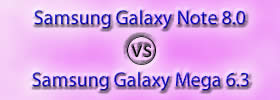Difference between NEFT and IMPS
Key Difference: ‘NEFT’ stands for National Electronic Fund Transfer. In ‘NEFT’ settlements, transactions are settled in batches during specific timings. 'IMPS' stands for Immediate Payment Service.’ It is an inter-bank electronic and instant money transfer service that can be availed on mobile phones.
We often need to transfer the funds from one account to the other. The advent of new technologies had made the task very easy. Looking back, one can easily remember a long queue of people in bank for various purposes. NEFT and IMPS are two importance services that are provided by the banking sector.
.jpg) ‘NEFT’ stands for National Electronic Fund Transfer. NEFT enables the individuals or institutions to electronically transfer the funds from any bank branch to any individual or institutions that may have an account in any other bank branch in the country participating in the Scheme. This system was launched in November 2005 in India. In India, Reserve Bank of India ordered all banks of India to migrate to NEFT by mid December 2005. A bank branch must be NEFT-enabled to use the NEFT funds transfer network. Individuals or institutions which maintain accounts with a bank branch are eligible for using NEFT. Even such individuals who do not have a bank account can also deposit cash at the NEFT-enabled branches with instructions to transfer funds using NEFT.
‘NEFT’ stands for National Electronic Fund Transfer. NEFT enables the individuals or institutions to electronically transfer the funds from any bank branch to any individual or institutions that may have an account in any other bank branch in the country participating in the Scheme. This system was launched in November 2005 in India. In India, Reserve Bank of India ordered all banks of India to migrate to NEFT by mid December 2005. A bank branch must be NEFT-enabled to use the NEFT funds transfer network. Individuals or institutions which maintain accounts with a bank branch are eligible for using NEFT. Even such individuals who do not have a bank account can also deposit cash at the NEFT-enabled branches with instructions to transfer funds using NEFT.
IMPS is an effective method of payment that is done using the mobile phones. Mobile phones had revolutionized many sectors and the banks have been also affected massively with this device. The world seems to be at your finger tip. Using the benefits of mobile phones, the banks have made the simplified ways to make the payments of various bills and also can be used to transfer funds. IMPS facilitate customers to use mobile phones as a medium to access their bank accounts.
National Payments Corporation of India launched IMPS in the country on 22 November, 2010. IMPS thus, is mainly referred in terms of a service that was introduced in India. Therefore, the details in the article will be to this specific payment service of India. To avail the service, the customers simply need to register with their banks, and the IMPS enabled banks provide a seven digit mobile identifier (MMID) number and mobile banking identification number (MPIN) to the customer. The customer can easily download and activate the mobile banking application. Now, a sender has to just key in the beneficiary’s mobile number, his MMID, the amount and MPIN.
2010. IMPS thus, is mainly referred in terms of a service that was introduced in India. Therefore, the details in the article will be to this specific payment service of India. To avail the service, the customers simply need to register with their banks, and the IMPS enabled banks provide a seven digit mobile identifier (MMID) number and mobile banking identification number (MPIN) to the customer. The customer can easily download and activate the mobile banking application. Now, a sender has to just key in the beneficiary’s mobile number, his MMID, the amount and MPIN.
After the processing, the sender receives a SMS confirming the success of transaction. The beneficiary customer must have registered his mobile number with the bank where he maintains the account and where he intends to receive the credit. Apart from this, the receiver must have a valid MMID provided by the bank. IMPS service follows 24 hour cycle with 11 PM cut-off while inter-bank settlement is done on next working day.
IMPS can be used for sending and receiving money, paying utility bills, internet shopping, booking travel tickets, etc. An IMPS is packed with various advantages like:
- It is used for instant money transfer
- It does not require the internet connection
- Disclosure of bank account details is not required
Some of the details have been mentioned in the table. The differences are made on the basis of the NEFT and IMPS that are implemented in India.
|
|
NEFT |
IMPS |
|
Definition |
Transactions are processed and settled in batches, typically at the end of the day or at specific intervals within the day. |
Transactions are processed and settled in batches, typically at the end of the day. |
|
Money Transfer System |
Usually takes 48 hours |
instant |
|
Charges |
Below Rupees 1 lakh is Free Rupees1 lakh to 2 lakhs costs Rupees 15 Above Rupees 2 lakhs costs Rupees 25
|
Generally, there are no charges for sending or receiving funds using IMPS. |
|
Amount |
Generally no limit for minimum No maximum limit under corporate internet banking Maximum limit of Rupees 5 lakhs under Retail Internet marketing |
Subjected to a daily cap of Rupees 50,000/- per customer with an overall calendar month limit of Rupees 2,50,000.00 overall through mobile. Transactions up to Rupees. 1000/- with an overall calendar monthly limit of Rupees 5000/-can be facilitated by banks without end-to-end encryption |
|
Unsuccessful transactions |
The funds will be returned immediately for unsuccessful transactions. It may take few hours. |
The funds will be returned immediately for unsuccessful transactions. |
|
Category |
Electronic Banking |
Mobile Banking |
|
Timings |
Business hours of Bank |
Can be sent and received at any time |
|
Holiday restrictions |
Yes |
No |
Image Courtesy: hastibank.org, projectsjugaad.com









Comments
Ch.Lakshminarayana
Sat, 12/17/2016 - 11:41
Add new comment